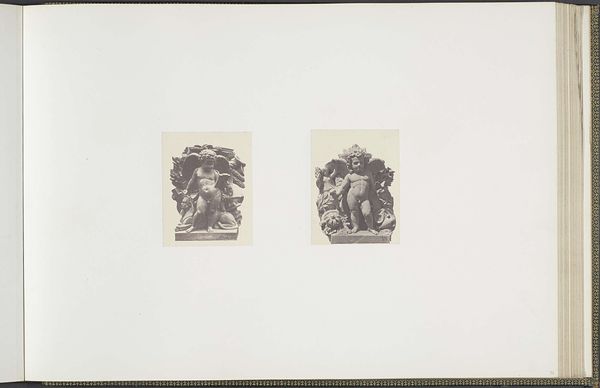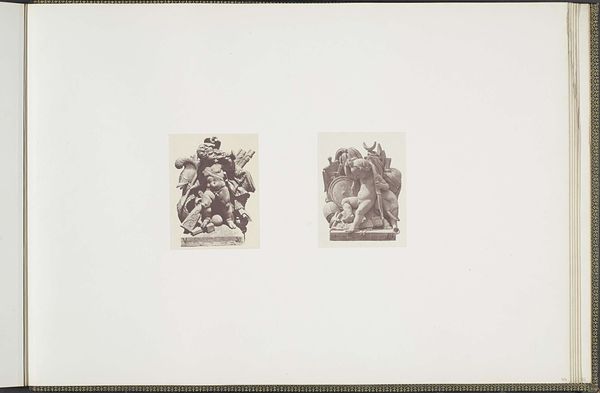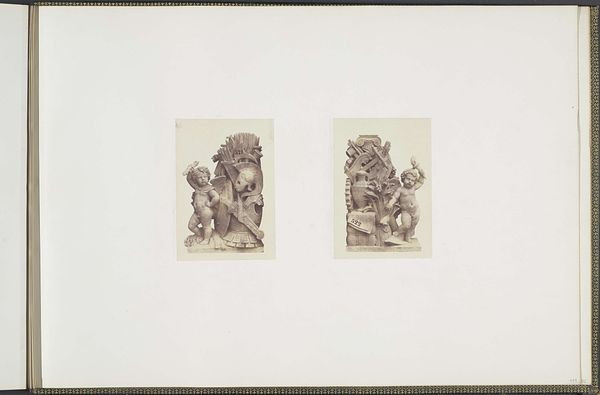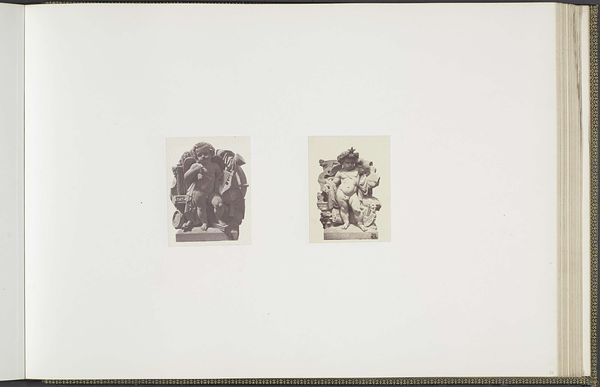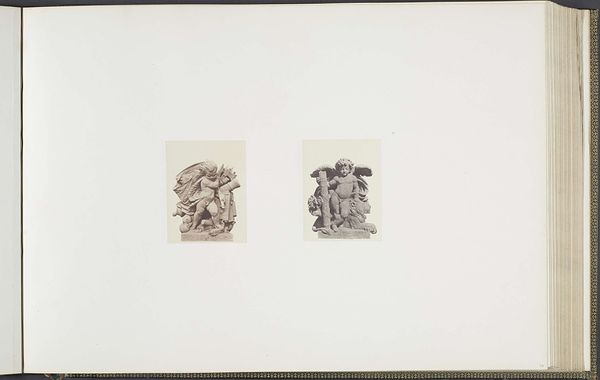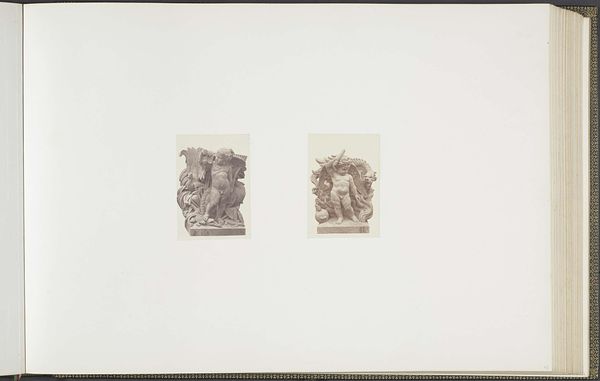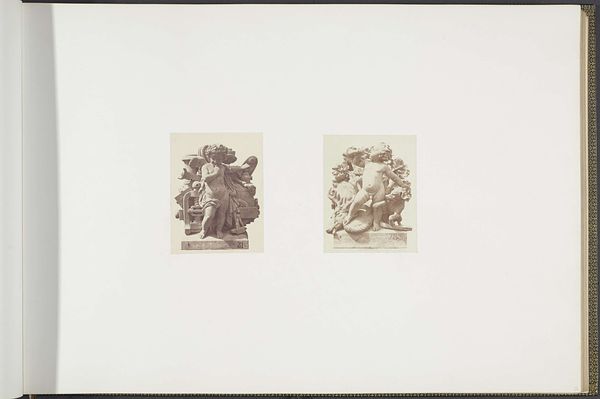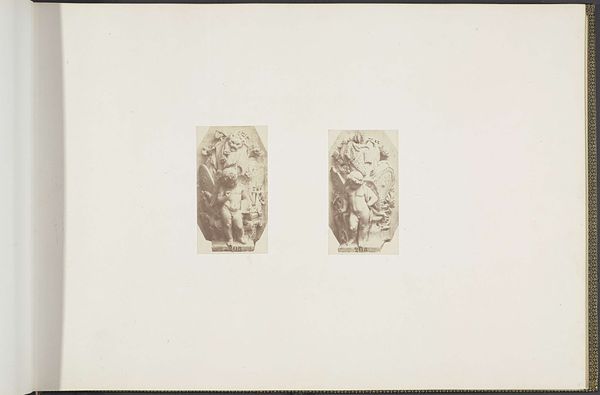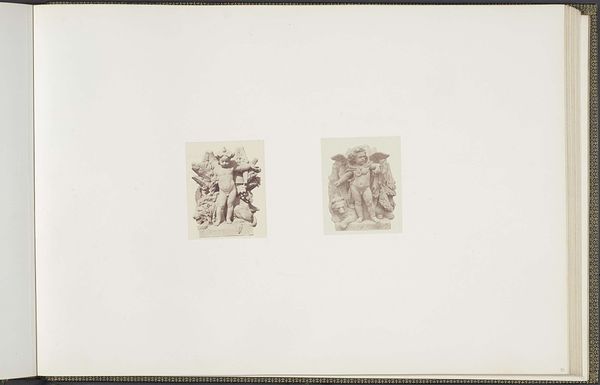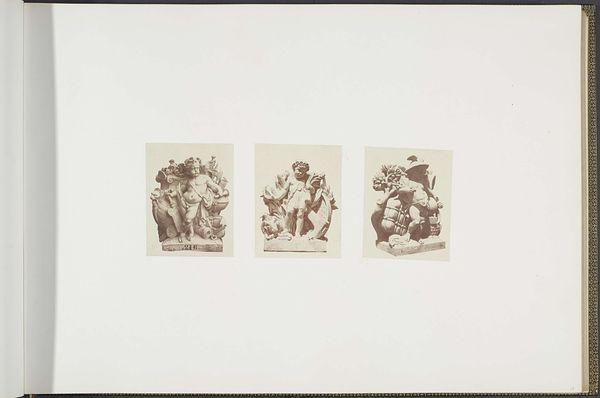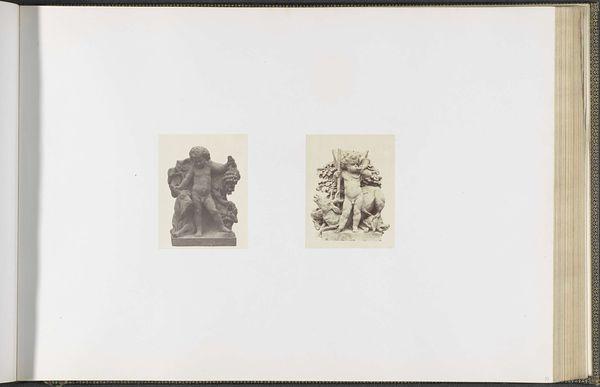
Gipsmodellen voor beeldhouwwerken op het Palais du Louvre: links "L'Eté" door Vital Dubray en rechts "L'Eau" door Hubert Lavigne c. 1855 - 1857
0:00
0:00
print, photography, sculpture, gelatin-silver-print
#
portrait
#
neoclacissism
# print
#
figuration
#
photography
#
sculpture
#
gelatin-silver-print
#
history-painting
#
academic-art
Dimensions: height 378 mm, width 556 mm
Copyright: Rijks Museum: Open Domain
Edouard Baldus captured these plaster models for sculptures at the Palais du Louvre in a photograph. On the left, we see 'L'Eté' (Summer) by Vital Dubray, and on the right, 'L'Eau' (Water) by Hubert Lavigne. Note the cherubic figures, symbols of innocence and abundance, representing the seasons and natural elements. This artistic motif harkens back to classical antiquity, where similar figures were used to personify virtues, seasons, and elements, often adorning temples and public spaces. The cherub is an enduring symbol of the human connection to nature. Consider, for instance, how the image of 'L'Eau' features a child with marine animals, a motif echoing Poseidon's dominion over the sea. This symbol, like others, undergoes a metamorphosis through history. We see it mirrored in Renaissance fountains and Baroque paintings, each time reflecting a culture’s evolving relationship with nature and its underlying primal forces. The cherubs engage us on a subconscious level, awakening memories and emotions tied to our fundamental connection with the natural world. Ultimately, these images remind us that symbols evolve in a non-linear fashion, continually resurfacing and adapting to new cultural landscapes.
Comments
No comments
Be the first to comment and join the conversation on the ultimate creative platform.
